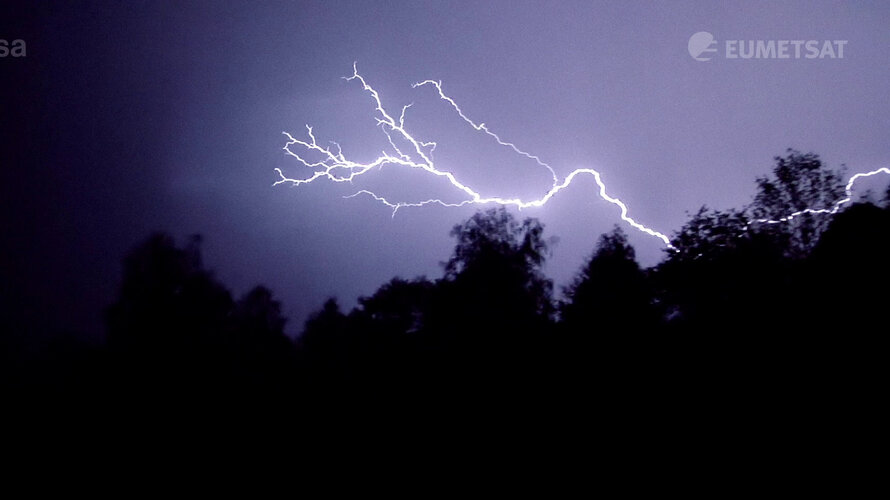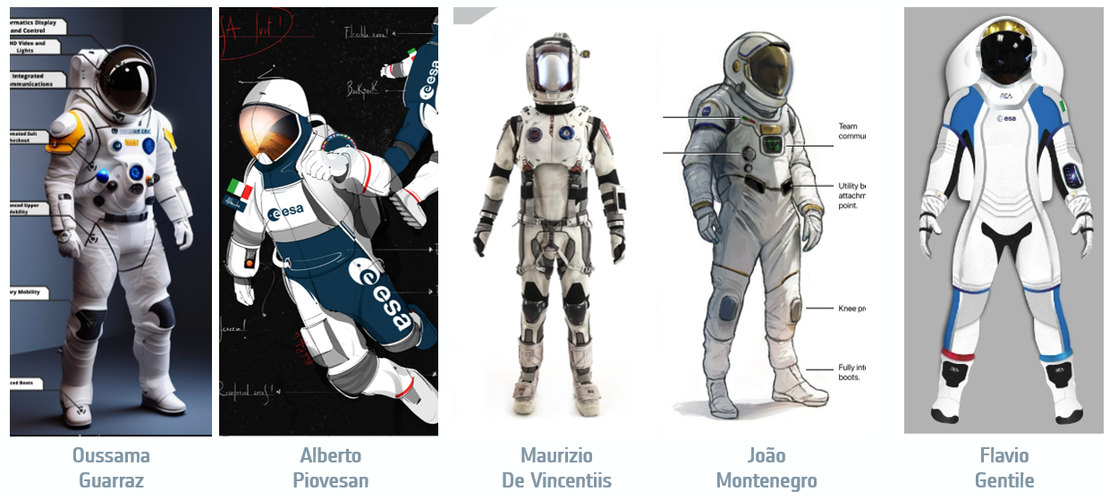
Copernical Team
First data from Europe’s Lightning Imager
 Video:
00:04:49
Video:
00:04:49
Discover the first results from Europe’s first Lightning Imager onboard the Meteosat Third Generation. The Lightning Imager can continuously detect rapid flashes of lighting in Earth’s atmosphere whether day or night from a distance of 36 000 km.
This is the first time a geostationary weather satellite has the capability to detect lightning across Europe, Africa and the surrounding waters. Each camera can capture up to 1000 images per second and will continuously observe lightning activity from space. The data will give weather forecasters greater confidence in their predictions of severe storms.
Watch live: First data from Europe’s first lightning detector
Watch live: First data from Europe’s first Lightning Imager
Tune in at 14:00 CEST for the first results from MTG’s lightning detector
Commanding role for Andreas in space

ESA astronaut Andreas Mogensen will be commander of the International Space Station (ISS) during his Huginn mission, becoming the sixth European astronaut to fulfil this role.
SpaceX Dragon splashes down carrying 3,600 pounds of samples, experiments
 A SpaceX Dragon cargo spacecraft splashed down off the coast of Florida Friday, carrying about 3,600 pounds of scientific experiments and samples from the International Space Station.
The Dragon detached from the ISS's Harmony module Thursday and made a parachute-assisted splashdown at about 10:30 EDT off the coast of Florida Friday.
The Dragon spacecraft was launched from Kenned
A SpaceX Dragon cargo spacecraft splashed down off the coast of Florida Friday, carrying about 3,600 pounds of scientific experiments and samples from the International Space Station.
The Dragon detached from the ISS's Harmony module Thursday and made a parachute-assisted splashdown at about 10:30 EDT off the coast of Florida Friday.
The Dragon spacecraft was launched from Kenned JUPITER 3 arrives at Cape Canaveral for launch
 Hughes Network Systems reports that its JUPITER 3 ultra high-density satellite has arrived in Cape Canaveral, FL, for its upcoming launch. JUPITER 3, also known as EchoStar XXIV, was built by Maxar Technologies in Palo Alto, CA, and is engineered to deliver gigabytes of connectivity to customers across North and South America. Last night, the satellite was carefully loaded onto an Antonov aircra
Hughes Network Systems reports that its JUPITER 3 ultra high-density satellite has arrived in Cape Canaveral, FL, for its upcoming launch. JUPITER 3, also known as EchoStar XXIV, was built by Maxar Technologies in Palo Alto, CA, and is engineered to deliver gigabytes of connectivity to customers across North and South America. Last night, the satellite was carefully loaded onto an Antonov aircra Imagine walking on Hera's asteroid
 September NASA's DART mission returned images of the boulder-strewn Dimorphos moonlet just before impacting it, in an audacious and ultimately successful attempt to shift its orbit around its parent asteroid Didymos.
Following on from DART, Hera will carry with it a pair of shoebox-sized 'CubeSats' that conclude their own observations by landing on Dimorphos. Team members have been using D
September NASA's DART mission returned images of the boulder-strewn Dimorphos moonlet just before impacting it, in an audacious and ultimately successful attempt to shift its orbit around its parent asteroid Didymos.
Following on from DART, Hera will carry with it a pair of shoebox-sized 'CubeSats' that conclude their own observations by landing on Dimorphos. Team members have been using D Lunar rover prototype conquers steep, scary lander exit test
 NASA's lunar rover VIPER recently completed another successful round of rigorous tests of the agency's first robotic Moon rover's ability to drive off the Astrobotic Griffin lunar lander and onto the lunar surface. Called an egress, this hours-long operation is one of the most critical and trickiest parts of VIPER's 100-day mission. It could be even trickier if VIPER's off-ramps onto the Moon ar
NASA's lunar rover VIPER recently completed another successful round of rigorous tests of the agency's first robotic Moon rover's ability to drive off the Astrobotic Griffin lunar lander and onto the lunar surface. Called an egress, this hours-long operation is one of the most critical and trickiest parts of VIPER's 100-day mission. It could be even trickier if VIPER's off-ramps onto the Moon ar Flight software for Artemis II meets testing checkpoint
 The first Artemis astronauts have begun crew training for their Artemis II mission around the Moon, and teams at NASA's Marshall Space Flight Center in Huntsville, Alabama, are testing and configuring the flight software for the mega Moon rocket that will launch them on their journey.
When NASA's SLS (Space Launch System) launches NASA's Artemis II crew aboard the Orion spacecraft, it will
The first Artemis astronauts have begun crew training for their Artemis II mission around the Moon, and teams at NASA's Marshall Space Flight Center in Huntsville, Alabama, are testing and configuring the flight software for the mega Moon rocket that will launch them on their journey.
When NASA's SLS (Space Launch System) launches NASA's Artemis II crew aboard the Orion spacecraft, it will China's FAST in the Hunt for Nanohertz Gravitational Waves
 A recent breakthrough in the field of gravitational wave detection has been achieved by scientists in China, who have found vital evidence of nanohertz gravitational waves, thanks to pulsar timing observations performed with the Five-hundred-meter Aperture Spherical radio Telescope (FAST).
The study was spearheaded by the Chinese Pulsar Timing Array (CPTA), a collaborative group of researc
A recent breakthrough in the field of gravitational wave detection has been achieved by scientists in China, who have found vital evidence of nanohertz gravitational waves, thanks to pulsar timing observations performed with the Five-hundred-meter Aperture Spherical radio Telescope (FAST).
The study was spearheaded by the Chinese Pulsar Timing Array (CPTA), a collaborative group of researc 
